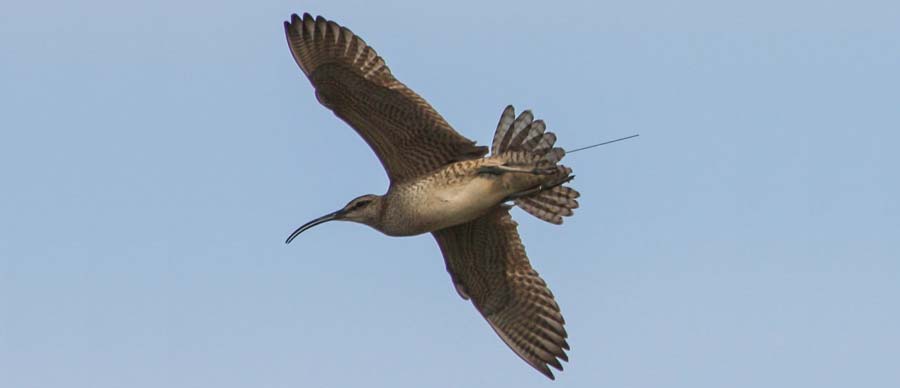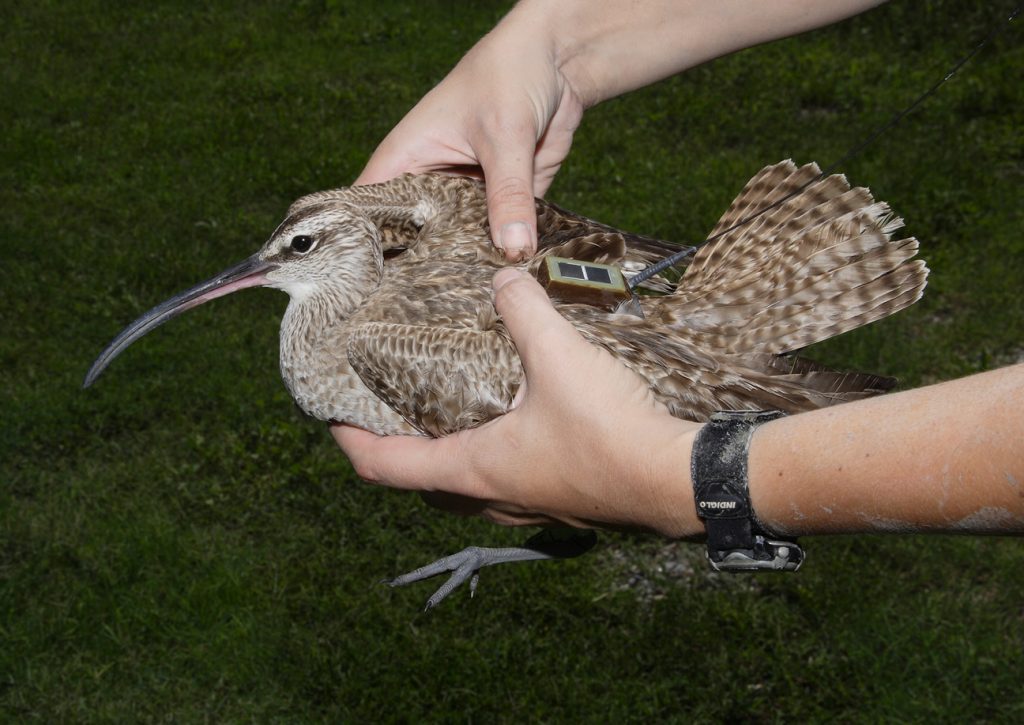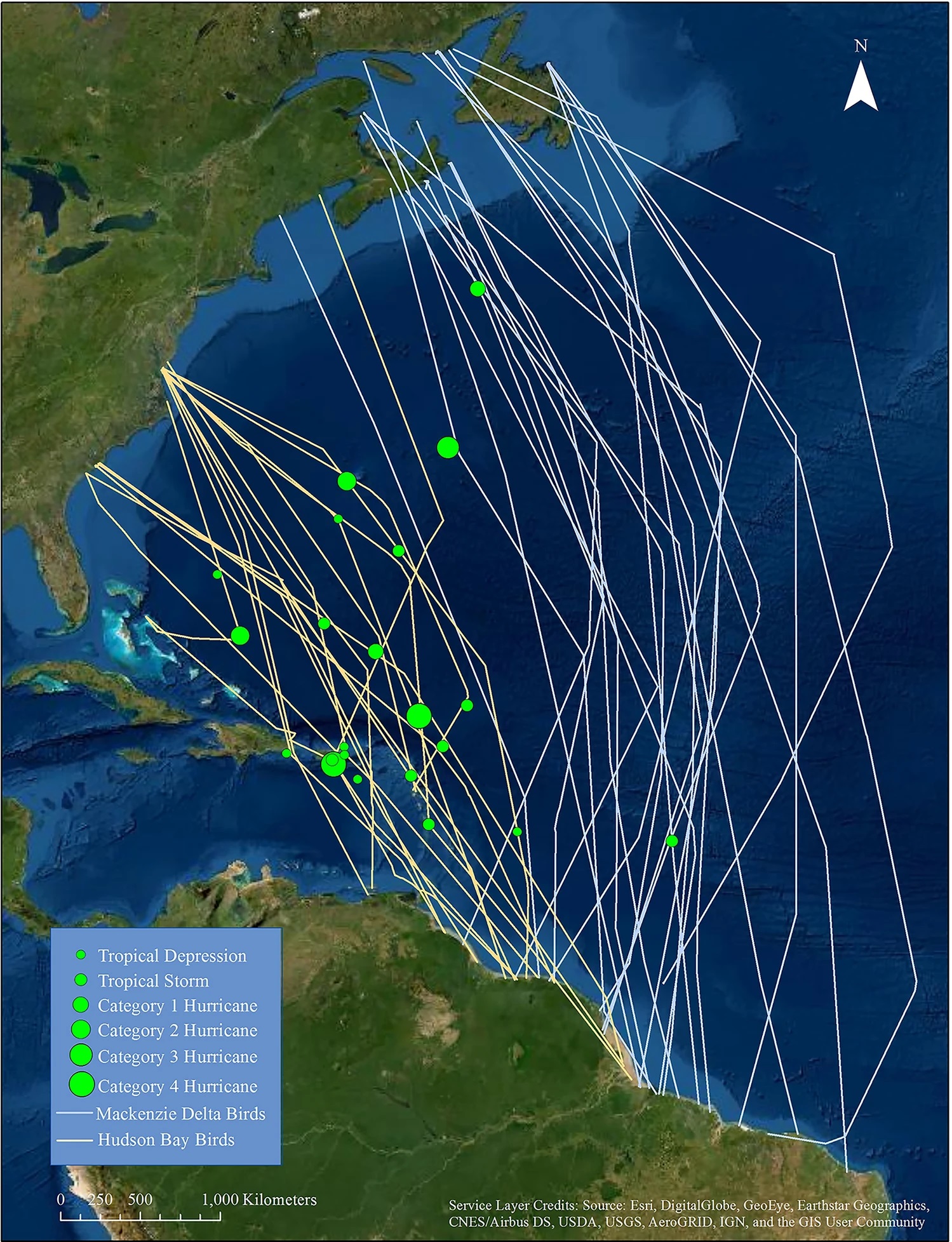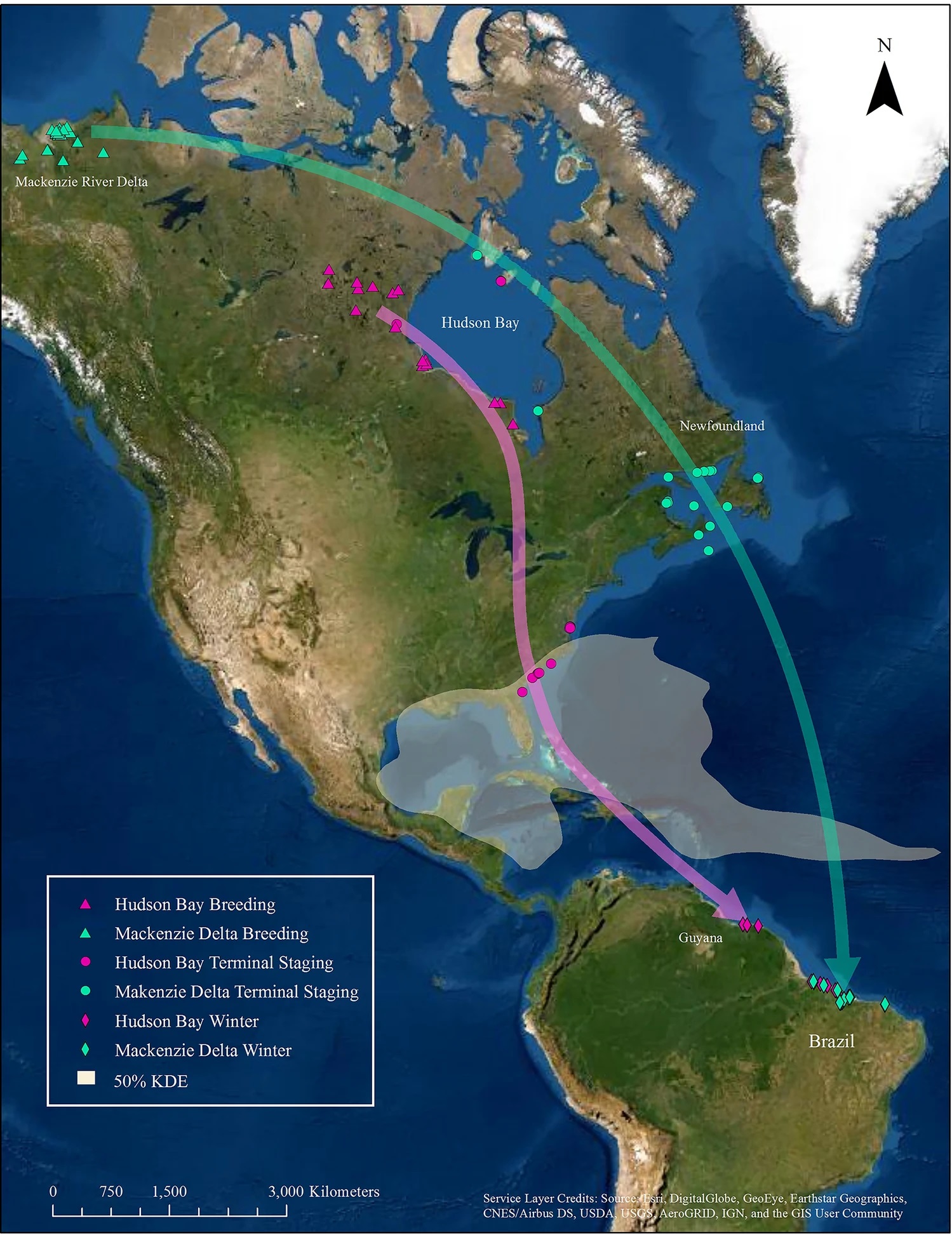← Back
Whimbrels crossing tropical storms

Whimbrels migrate at the peak of the hurricane season, crossing the Atlantic. Different populations of this American shorebirds have different strategies to deal with tropical storms.
However, they may have to find new ways with climate change worsening the storms.

A whimbrel with transmitter (credit Bart Paxton)
Whimbrels are mid-sized shorebirds, part of the curlew family. Hudsonian whimbrels (Numenius phaeopus hudsonicus) occur in three isolated breeding populations around western Hudson Bay, throughout the Mackenzie River Delta in north-western Canada and in Alaska.
As many species of Arctic and temperate region shorebirds, they are strongly migratory. As most, one of their migrations is done during fall. However, early fall is also the peak of the hurricane season in the Atlantic. We already showed how turtles may avoid swimming into the core of a tropical cyclone (see Sea turtles in tropical cyclones). What of migratory birds?
Tracking whimbrels reveal two strategies with respect to tropical storms
Twenty-four whimbrels from two populations (Mackenzie Delta, Hudson Bay) were equipped with Argos PTT along twelve years. The Center for Conservation Biology (CCB) and partners began to deploy small (5 g) solar-powered Argos satellite transmitters during the spring of 2008.
This long period enabled to record enough crossing of tropical cyclones to answer the question of the bird-tropical storm interactions.
Both whimbrel populations migrate to a winter ground along the northern coast of South America, taking non-stop flights to their destination. The satellite tracking reveals, however, that they do not follow exactly the same route.
More info about animal tracking with Argos
Shorter and riskier route but with safe hold vs longer and quieter with no possible rest
Coming from Mackenzie Delta, the whimbrels bypassed the area with the most active tropical storms (“hurricane alley”), a very long route but crossing few storms (3 over 22 during the periods of observation). The population from Hudson Bay had taken a more direct, shorter, route which crossed more hurricanes (13 accounted for).
Birds that did not encounter a tropical storm made a quick passage to their winter grounds. Half of those having encountered a storm went to ground on Caribbean islands, using them as a safe place.
Those took longer to complete trans-Atlantic crossings. Some were lost, two to hunters one to a predator (showing that the safety is relative there). The other half rode out the tropical storms, some through their most violent part, but this may not be without depletion of their energy. Indeed some made a premature landfall.

Individual tracks of whimbrels during fall migrations from Mackenzie Delta and Hudson Bay populations. Circles represent the locations of whimbrel encounters with tropical cyclones, and the category of those at that time. (from [Watts et al., 2021])
Increased hazards with stronger tropical storms
Today whimbrel populations using the Western Atlantic Flyway are already declining at a high rate. They have indeed been classified as populations of High Conservation Concern.
One of the forecasted effects of global climate change on tropical storm is the increase in their size and intensity as water temperatures continue to rise. This may result in more Hudson Bay whimbrels being grounded on the Caribbean islands, with the hunting threat still present.
At the extreme, changes in those tropical storms may induce adjustments in migratory species’ pathways or behaviors.
Reference and links
- Watts, B.D., Smith, F.M., Hines, C. et al. Whimbrel populations differ in trans-atlantic pathways and cyclone encounters. Sci Rep 11, 12919 (2021). https://doi.org/10.1038/s41598-021-92429-z
- ccbbirds.org
- https://www.facebook.com/ConservationBiology
- https://twitter.com/CtrConsBiology
Main photo: Whimbrel in flight with transmitter antenna extending beyond the tail (Credit Fletcher Smith)

